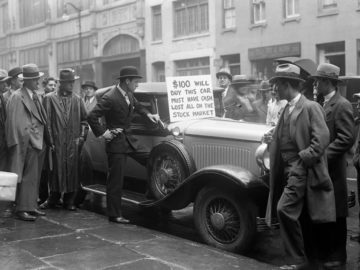Mark Buchanan in Nature:
 In the mid-1920s, the mood in the United States was buoyant. After years of surging economic growth, fuelled by expansion in the automobile industry and speculation in financial markets, the United States had the lowest debt of any large industrial nation. The future looked just as rosy. A 1926 article in The Wall Street Journal noted how “American wealth has doubled in the past dozen years”, delivering “a rate of progress that has never been known in Europe”.
In the mid-1920s, the mood in the United States was buoyant. After years of surging economic growth, fuelled by expansion in the automobile industry and speculation in financial markets, the United States had the lowest debt of any large industrial nation. The future looked just as rosy. A 1926 article in The Wall Street Journal noted how “American wealth has doubled in the past dozen years”, delivering “a rate of progress that has never been known in Europe”.
That astonishing uptick was real. Yet the exuberant mood vanished just a few years later with the stock-market crash of October 1929, followed by a wave of bank failures. As the trouble spread to Europe, more banks succumbed, and the world entered the Great Depression. But the seeds of this downturn were evident even during the boom. US authorities worried over how financial innovations — including the invention of derivative contracts such as options — had created a vast network of overextended investors engaging in risky speculation.
What was so new — and had for a time seemed so beneficial — led instead to profound upheaval and a global social and economic crisis.
Similar events, historian Harold James argues in his illuminating book Seven Crashes, recur across human history. Sudden outbursts of novelty presage most major economic crises.
More here.
